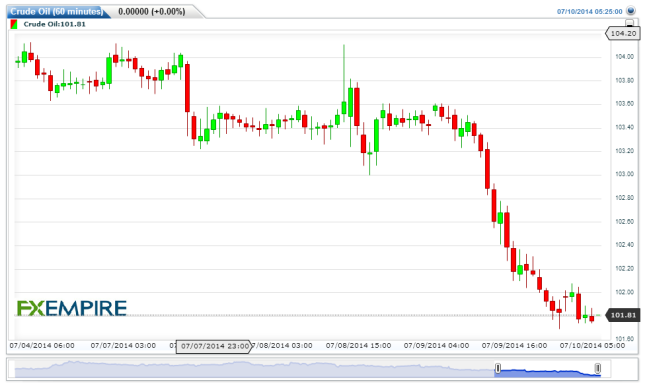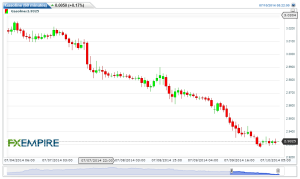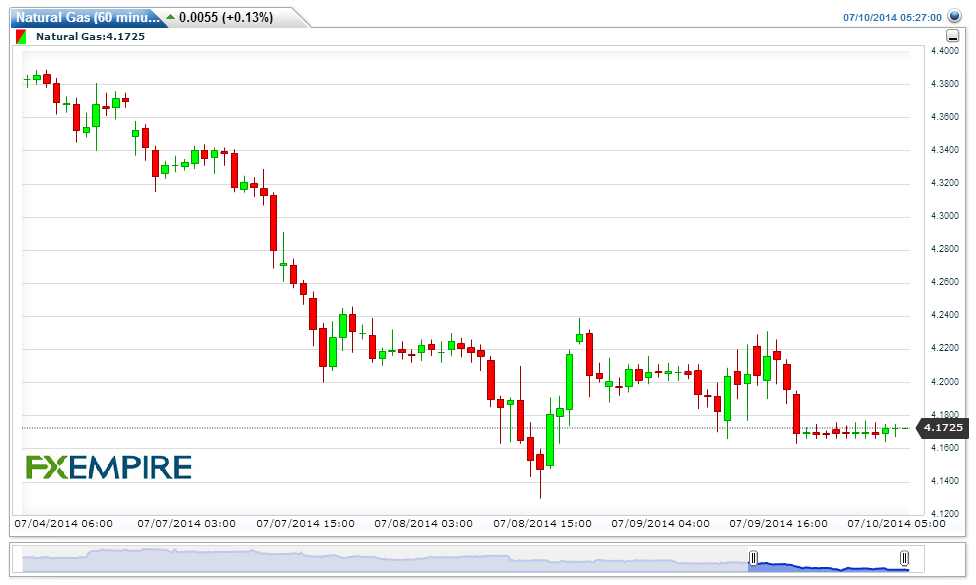Crude oil continues to decline was fundamental supply and demand replace geopolitical stress and tensions. Crude oil is trading at 101.81 down by 48 cents while Brent oil dipped 5 cents to exchange at 108.16 well below its average trading range. What a turnaround in events. Crude prices have been falling in the recent weeks as resumption of Libyan exports and ease of Iraq situation has ensured that oil markets remain well supplied. Besides, the reduction in gasoline demand in the US is also raising concerns from the world’s largest consumer of crude.
At the same time, demand for crude has been low from European refiners whose margins have been squeezed by an influx of diesel from the United States, Russia and Asia. All the factors are likely to push crude prices down further in the coming session. Faltering demand for gasoline in the US, resumption of Libya’s crude output and exports and ease of geo-political tensions have been the prime factors behind recent fall in oil prices.
Libya has restarted the 340,000-barrel-per-day (bpd) El Sharara field after protesters ended a four-month strike, which could double the country’s current crude output. The U.S. benchmark has fallen in nine straight sessions, its longest such streak since December 2009. As speculators dumped Brent, its premium over U.S. crude touched its narrowest point in almost a month at $5.15, and then widened to settle at $5.85.


The EIA released its weekly inventories report last night and US crude oil inventories declined by 2.4 million barrels for the week ending on 4th July 2014. Gasoline stocks rose by 0.579 million barrels whereas distillate inventories rose by 0.227 million barrels for the same time period. U.S. gasoline stockpiles rose to 214.3 million barrels in the week ended July 4, the EIA, the Energy Department’s statistical arm, said yesterday. Supplies were forecast to decrease by 400,000 barrels, according to the median estimate in the Bloomberg survey of nine analysts.
Consumption of the motor fuel shrank by 233,000 barrels a day to 8.94 million, the report shows. The peak U.S. driving season typically starts on Memorial Day, which was May 26 this year, and runs through Labor Day on Sept. 1. Gasoline for August delivery dropped 3.52 cents, or 1.2 percent, to 2.9377 a gallon. U.S. pump prices fell 0.4 cent to 3.645 a gallon nationwide yesterday, the lowest since June 10, according to AAA, the largest U.S. motoring group.
US natural gas is trading at 4.172 searching for a bottom as seasonal demand falls below expectations. U.S. natural gas futures lost almost 1 percent on Wednesday, the third decline in a row, on forecasts for continued cooler-than-normal weather and expectations for another big storage build. After a record eight consecutive triple-digit injections, the inventory report due later today is expected to show a buildup of 92 BCF of gas. 
